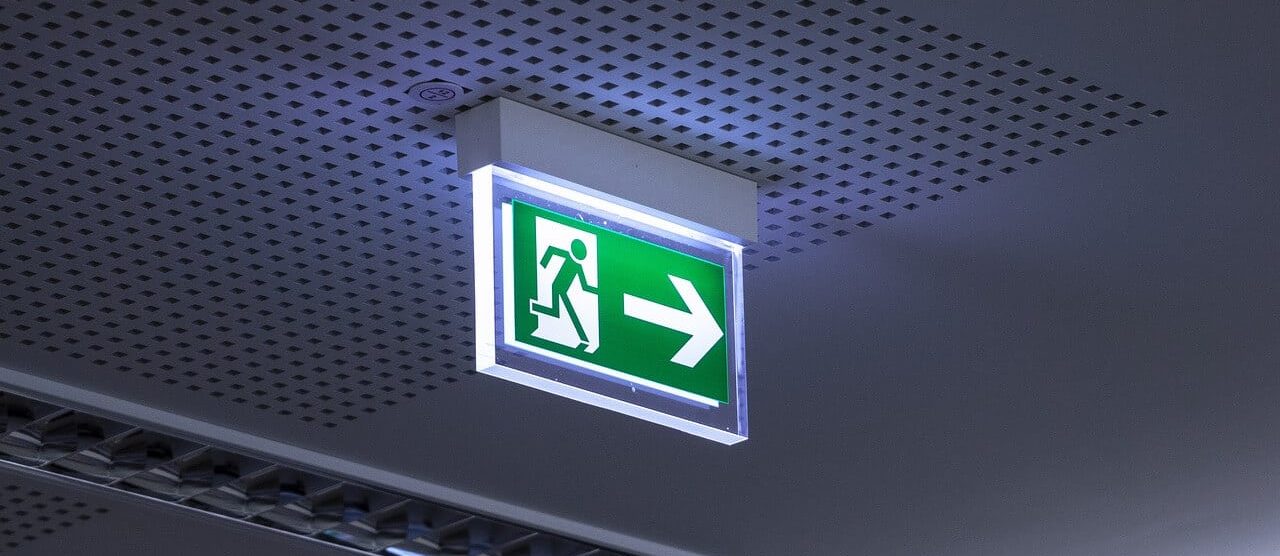Fire doors are installations that have been put through rigorous testing so that they can be purpose-built to withstand and prevent the spread of fire or smoke by containing it within the area it started. For commercial properties in the UK, it is a legal requirement to have fire doors in place in order to ensure the safety of the building’s occupants. Despite this, a lot of commercial property owners don’t understand the importance of fire doors. So, in this blog we’re going to talk all about them, the regulations that are required of them and where they are needed.
Are fire doors required in commercial buildings? In short, yes all commercial properties are required, by the Regulatory Reform (Fire Safety) Order 2005, to have fire-resistant doors installed into the buildings that fit a certain quality and type. This is to ensure that the building is upholding a duty of care and safety for all occupants inside.
Read on to find out more about why your commercial building needs a fire door, where you should install them and how to maintain them.
Jump Text
- Where Are Fire Doors Required?
- Purpose of Fire Doors
- How to Check a Fire Door
- Fire Door Regulations in the UK
- Fire Door Longevity
Where Are Fire Doors Required in Commercial Buildings in the UK?
For commercial buildings, it is required that there are fire doors throughout the building to provide both horizontal and vertical escape routes. A horizontal fire exit directs people to a fireproof area on that floor which creates safety away from the origin of the fire and smoke. Whereas a vertical fire exit directs people to a route where they can ascend or descend between floors this can include things like stairways and ramps.
What is the Purpose of Fire Doors in Commercial Buildings?
A fire door has two main purposes within a commercial building. They are designed to withstand fire and the elements to prevent spread and ensure that the occupants inside are safe when they are closed. Whereas when they are open, they are a way to provide an escape towards a safe designated fire route.
How Do You Check a Fire Door?
In line with the Regulatory Reform (Fire Safety) Order 2005, it is required that all commercial properties must have a fire risk assessment conducted. This is to ensure that the building is safe and that the building is following regulations. The fire risk assessment will point out any fire risks and suggest how these can be resolved. A responsible person should be placed in charge within the building to manage all fire safety regulations. This includes ensuring that the fire risk assessment is up to date, has been carried out and the suggestions made are being followed up.
The main requirement of a responsible person is to regularly inspect the fire doors to check for any damage or issues that could result in the doors becoming redundant. A responsible person should ensure that:
- The door and hinges are fitted correctly and there are no gaps.
- The door closer shuts the door fully and the door closes around the whole frame.
- There are no visible damage e.g cracks
- The door is not wedged open; a fire door cannot properly function if it is left open.
- There is a label or plug on the door (usually located at the top) to ensure it is a certified fire door
Your designated ‘responsible person’ should be checking your fire doors every six months to ensure they are following guidelines, however it is good practice to try and check the doors every 3 months.
What Are the Fire Door Regulations in the UK for Commercial Buildings?
All fire doors should consist of a door with a frame built around it with intumescent seals, fire-resistant hinges and an automatic door closer. They should also have a gap between 2mm to 4mm to help block smoke from passing through. Fire doors can be made from a range of different materials from wood to aluminium. Generally, they all hold these same safety features the element that sets them apart is their fire resistance rating. A FD rating is given to a fire door to signal to people how resistant it is so the responsible person can determine which is most suitable for their property. The four main types of FD ratings are;
- FD30- These doors provide 30 minutes of fire resistance
- FD60- These doors provide 60 minutes of fire resistance
- FD90- These doors provide 90 minutes of fire resistance
- FD120- These doors provide 120 minutes of fire resistance
Typically the FD30 doors are the most common in buildings for adhering to fire regulations. This is because they give added protection and time to allow occupants inside to move to a place of refuge. However, if you are unsure of what type of door you may need, refer to the government regulations.
How Long Does a Fire Door Last?
There is no set time for how long a fire door should last. However, it should be taken into consideration any wear and tear that it may experience. Other factors that should be taken into account when considering whether it’s time to replace your fire door include:
- Damage from wear and tear
- Damage from misuse or excessive force
- Natural deterioration over a long period of time
- Damage from exposure to a fire or other elements.
Sykes London: Shop Fronts & Shutters
At Sykes, we have over 35 years of experience within the shop front and shutters industry. We offer a range of bespoke design and fitting services across the UK. Including fire doors, which work with both you and your property in a safe, secure and stylish environment. We offer a commercial door, roller shutter or shop front that suits your needs.


